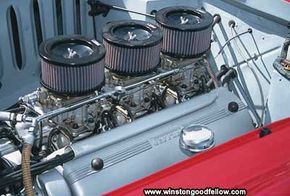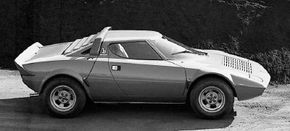Where Lancia’s Stratos was a raw sports car born from rallying, its Lancia Thema 8.32 was a luxurious sedan. About all they had in common was that each had a Ferrari engine.
The Lancia Thema appeared in 1984, the result of a desire for a flagship sedan by four European marques: Lancia, its parent company Fiat, Alfa Romeo, and Saab. They pooled their resources to make a new platform that could be shared and adapted by each company.
The result was the Fiat Croma, Alfa 164, Saab 9000, and the Lancia Thema. The Lancia Thema marked Lancia’s return to a more-exclusive market segment. As such, it had proper luxury amenities such as a full leather interior, heated seats, sunroof, and air conditioning. Power initially came from a variety of naturally aspir-ated, turbo, and diesel Lancia-speced engines.
With two oil crises and the economic and political strife of the late 1970s and early 1980s receding from Europe’s collective memory, speed and ever-greater luxury came once again to the fore. Lancia’s response was the Lancia Thema 8.32. Introduced in 1986, the model name referred to its use of the 2926cc V-8 (8-cylinders, 32 valves) from the Ferrari’s midengine 308 quattrovalvole and Mondial.
Because the Lancia Thema was front-wheel drive, the transversely mounted V-8 slipped nicely into the sedan’s engine compartment. The engine used a two-plane crank for better and smoother low speed performance. Though horsepower decreased to 215, from 240 in the Ferraris, torque remained 209 pound-feet at 4500 rpm. (Later “Series II” Themas had catalytic converters that dropped power output 10 hp.) Other mechanical changes included a beefed-up suspension with electronically controlled dampers, improved brakes, and a new ZF steering system.
The Lancia Thema 8.32 was distinguished from other Themas only by badging, a different grille, alloy wheels, and a trunklid spoiler that raised automatically when speed exceeded 80 mph. The interior had the finest woods on the dashboard, and finer leather than the standard models.
The 8.32 was a wolf in sheep’s clothing, running 0-60 mph in the mid-7-second range, the quarter-mile in the mid 15s, and topping out just shy of 150 mph.
For more fantastic Ferrari information, check out:
- How Ferrari Works
- Ferrari Cars
- Other Cars With Ferrari Engines
- Ferrari History and Biographies
- Ferrari Pictures
- Ferrari F1
- Ferrari Sports Racing Cars
- Ferrari 599 GTB Fiorano

